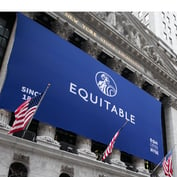By
In part, life insurance has to be sold because it cant be bought like any other product. It is one of the very few products available that a consumer has to qualify for after it has been sold. There is a way to streamline the life insurance sales process so that buying a fully underwritten life insurance policy is not such a hassle.
Heres how life insurance sales happen now: (1) the agent makes the sale; (2) he submits the application to the insurance company; and (3) then the underwriting process is begun. While underwriting is necessary for effective risk classification and fairly priced products, the frustrating friction it creates does not need to be part of the sales process.
The most time-consuming part of the sale should be the time it takes the consumer to make a decision–not the time it takes the insurance company to decide.
The solution is simple: Change the order of the elements in the traditional approach to selling life insurance. Underwrite first. Then sell. This could be done by “unbundling” the risk evaluation and selection, or underwriting, process from the life insurance sales process.
The unbundled risk assessment service would be provided by a new type of company: a Risk Assessment Company (RAC). An RAC would provide an independent risk assessment on individual lives for a fee. This risk assessment would be done entirely separate from, and early, in the sales process. An RAC would provide a personal service to individuals who could authorize any insurance company to access their risk profile data.
Insurers could use the risk profile within an expert underwriting system to provide binding insurance illustrations or quotes. These illustrations would be based on a fully underwritten mortality classification system and would reflect the best rate available from that company with respect to an applicant with the provided risk profile. An applicant would, then, merely need to accept the offer in order to put insurance immediately and unconditionally into effect on his or her life.
In addition to moving the time-consuming risk selection activity to a point in the process when there is time to do it, insurers using an RAC would realize significant expense savings. These savings, which could be used to reduce premiums, would come from several sources:
–Insurers would not incur risk assessment costs directly. They would be “fronted” by the applicant.
–While the expense savings would be offset by lower premiums, insurers would incur no selection costs with respect to Not Taken policies.
–Underwriters in life insurance companies would be more efficient since they would spend less time dealing with agents explaining their decisions.
–The underwriters working for the RAC would be more focused on their risk classification work and, therefore, more efficient.
–In general, marketing and distribution would be simplified and made more efficient.








 September 09, 2001 at 08:00 PM
September 09, 2001 at 08:00 PM









